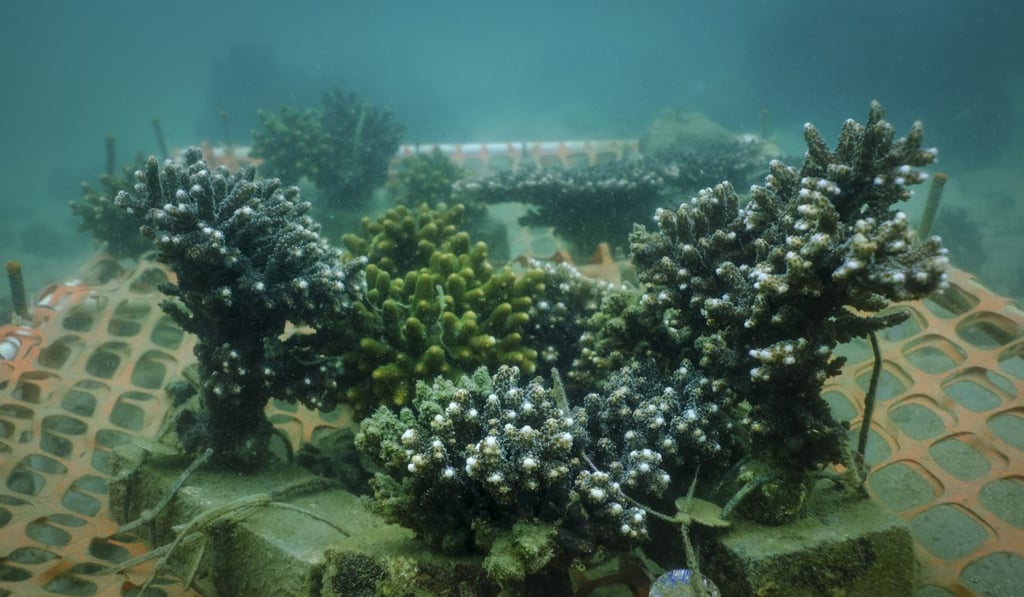Could Hong Kong’s hardy corals be key to saving the world’s threatened reefs?
- Corals that can survive Hong Kong’s ‘apocalyptic environment’ offer insight into how to better protect reefs elsewhere
- Successful conservation projects have the potential to transform the seas of southern China and beyond

In the chilly waters of Hoi Ha Wan Marine Park, in Sai Kung West Country Park, can be found a conservation success story that has the potential to transform the seas of southern China.
“Hong Kong is the apocalyptic environment for corals,” says Yu-De Pei, a coral researcher from Taiwan who works with Vriko Yu Pik-fan on a pioneering project run by the University of Hong Kong’s Swire Institute of Marine Science (Swims). Yet, Hong Kong still has corals; against all the odds, they have survived a perennial assault by what the two scientists call “stressors”: eutrophication, high turbidity, sedimentation, ocean warming, reclamation, overfishing, plastic pollution, human sewage and drastic sea temperature changes.
In the murky Hoi Ha waters, Yu and Pei demonstrate that, with some help, these hardy corals can not only survive but flourish.
Underwater visibility in the northwestern part of the marine park is about as good as it gets in Hong Kong waters, but on the day we dive, it is restricted to between three and five metres. Only by closely pursuing the white fins of Yu across the coral- strewn seabed is it possible to locate the epicentre of the project.
Appearing through the gloom is a simple PVC piping frame covered with ugly orange industrial webbing. On the structure are about 20 small healthy corals growing in what the two scientists refer to as a nursery.

For about two years, marine ecologists from Swims have been using this nursery as part of a government-sponsored project to help restore coral colonies that fell victim to an ecological catastrophe over the winter months of 2015 and 2016. Nobody is quite sure what caused this “mortality event”, when about 30 per cent of one of the park’s dominant coral species, Platygyra (a form of brain coral common in Hong Kong waters), was killed off or suffered living tissue damage. It could have been a red tide toxic algae bloom, a sudden increase in pollution levels or an extreme temperature change.
